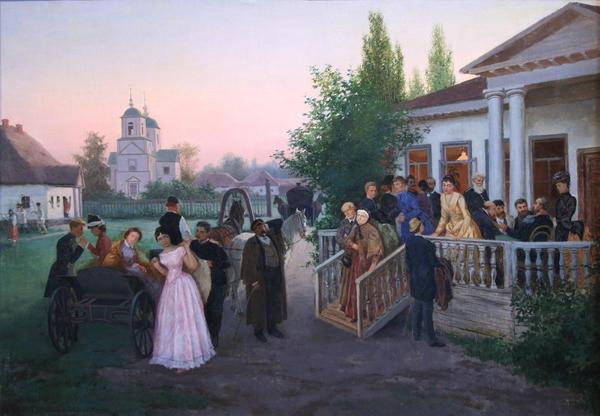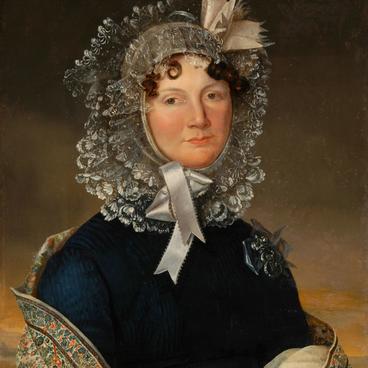Konstantin Trutovsky spent his childhood in Ukraine, so the colorful traditions, legends and daily life of Little Russia (‘Malorossiya’) remained in his heart forever. In 1839 he entered St. Petersburg Engineering School, where he made friends with Feodor Dostoyevsky.
‘Back in 1844, I was eighteen and naturally in love. So I corresponded with my love and composed poems for her’, Trutovsky wrote. ‘I told Feodor Mikhailovich (Dostoyevsky) about all the twists and turns of my love affair with youthful frankness. I eagerly described the beauty of my love as well as her deeds and words…’ The nice girl’s name was Anna Lvovna. At home they called her “Netochka”. Feodor Mikhailovich very much liked that name and entitled his new book “Netochka Nezvanova”.
The young artist’s view of the world was greatly influenced by Feodor Dostoyevsky, who introduced Konstantin to Gogol’s and Shakespeare’s works and invited him to literary readings and political meetings. Konstantin Trutovsky had a narrow escape from arrest. On the evening when Dostoyevsky and other members of Petrashevsky Group were detained, Trutovsky planned to join their meeting but, due to family circumstances, couldn’t attend. He didn’t give up his views, even after a sensational and frightful court trial.
Trutovsky’s works denounced the upper classes, who revelled and idled away the time. Peasant serfs were depicted as wise and dignified people, though sometimes oppressed by poverty and humiliation. In the late 1850s to the early 1860s, Russians widely debated the idea of stopping serfdom. In that context, the paintings of Konstantin Trutovsky soon became popular.





